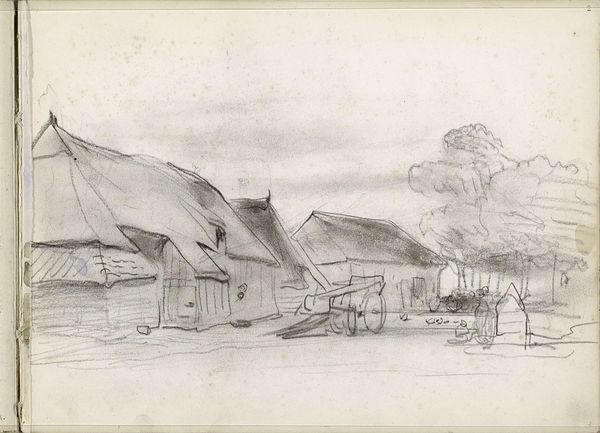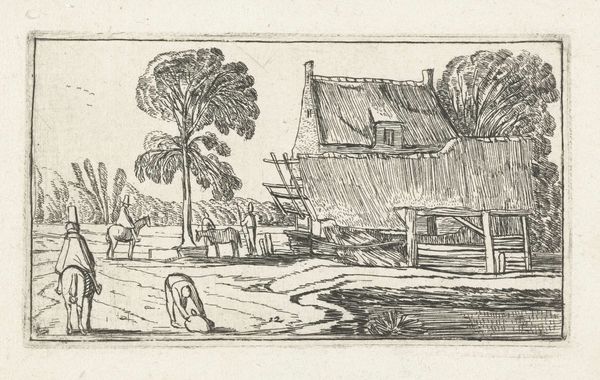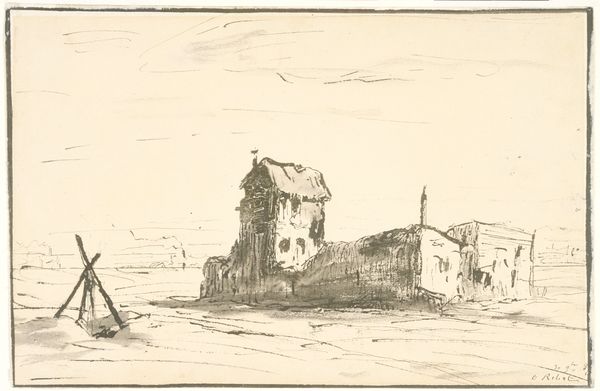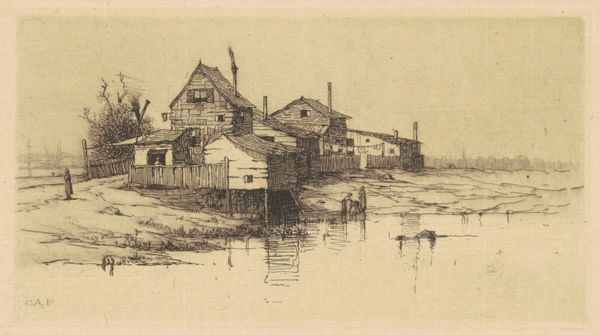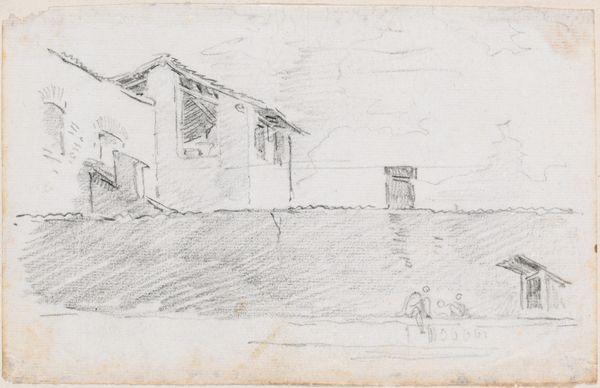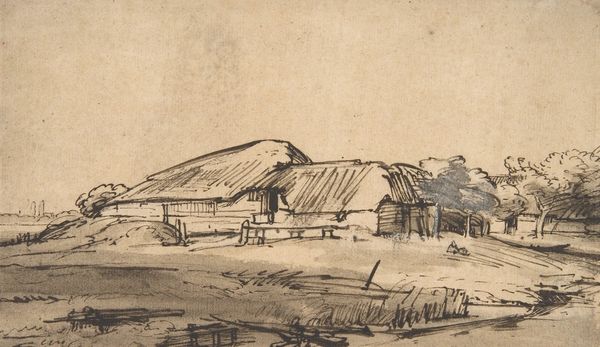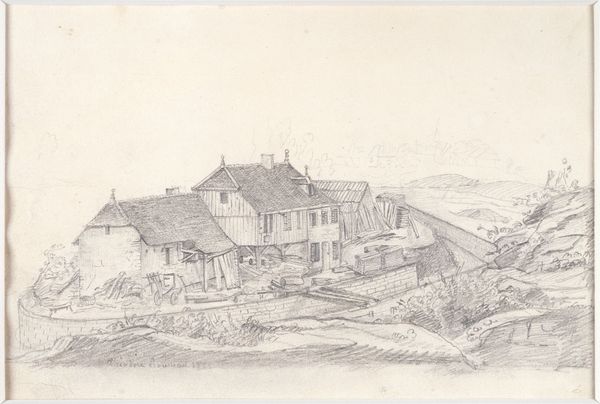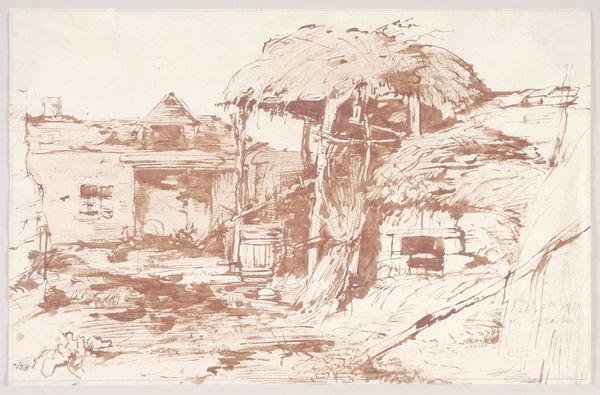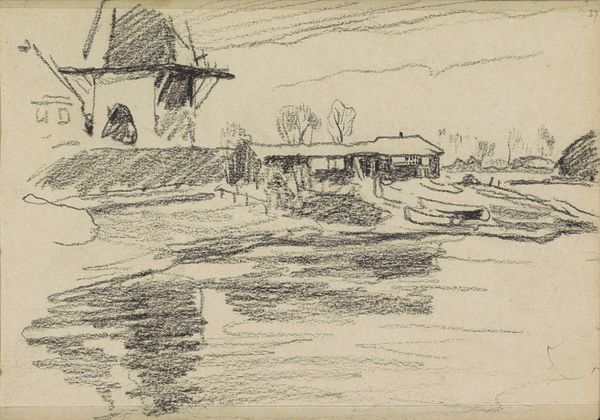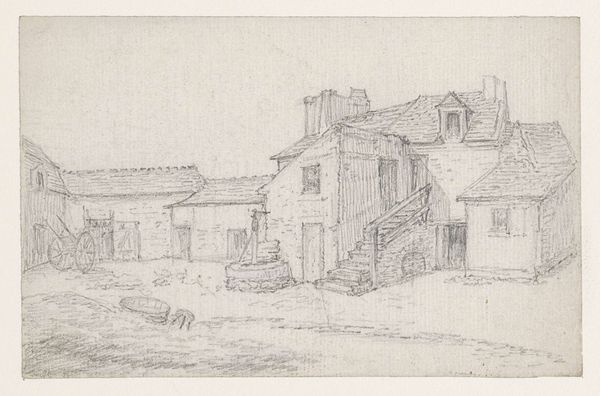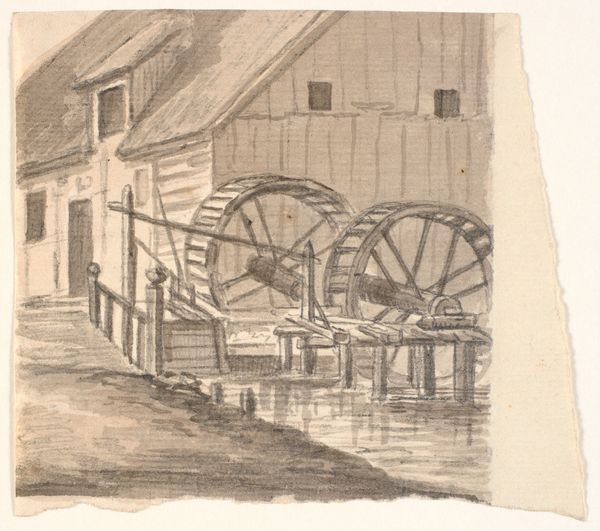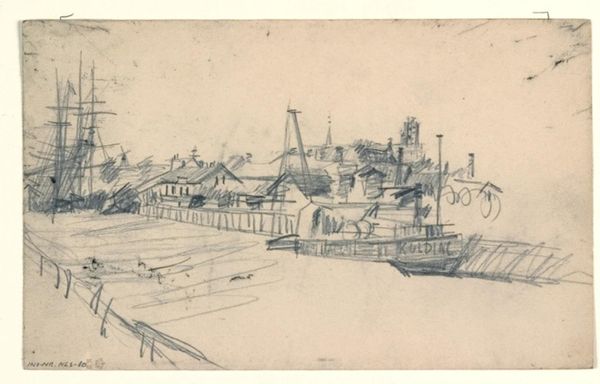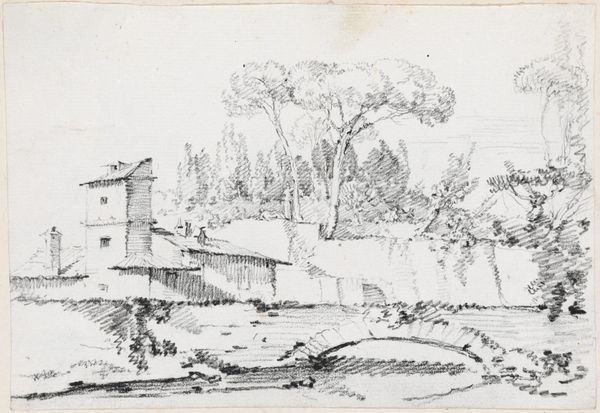
drawing, paper, ink
#
pen and ink
#
architectural sketch
#
landscape illustration sketch
#
drawing
#
mechanical pen drawing
#
pen sketch
#
sketch book
#
landscape
#
paper
#
personal sketchbook
#
ink
#
sketchwork
#
geometric
#
sketch
#
pen-ink sketch
#
pen work
#
cityscape
#
modernism
Copyright: Public domain
Editor: Here we have Stefan Dimitrescu’s "Houses in Constanța" from 1926, rendered in pen and ink. It feels like a memory, captured with a sense of fondness and perhaps a little melancholy. The lines are simple, almost hurried, but they create a very distinct place. What do you see in this piece? Curator: This drawing evokes a powerful sense of place precisely because of those "hurried" lines, as you say. They remind me of vernacular architecture rendered as visual mnemonics, a sort of architectural shorthand that captures the essential, remembered form of these buildings. What emotional or cultural weight do you think these houses might hold? Editor: Well, given it's Constanța, a port city, maybe these are the houses of fishermen or merchants? There's a sense of quiet industry, but also of vulnerability to the elements. Curator: Exactly! And consider the bareness of the composition. It’s not just a visual record; it's about the psychological impact of place, memory, and belonging. Dimitrescu isn't merely depicting houses; he’s suggesting how architecture embodies collective memory. Do the simple geometric shapes carry symbolism? Editor: The geometric shapes, maybe representing stability or a return to order after… something? Conflict, change…? The starkness also lends it an iconic quality, like a simplified symbol for “home”. Curator: Precisely. It's a distillation of ‘home’ to its essential forms, triggering something deep within our understanding of shelter and belonging. There's cultural continuity embedded in those lines, even in their seeming simplicity. Editor: It’s fascinating how much information and emotion can be conveyed with so little detail. I'll definitely look at sketches differently now. Curator: And I, in turn, will remember to value my own emotional responses to artworks to a greater extent. It’s often the most important place to begin.
Comments
No comments
Be the first to comment and join the conversation on the ultimate creative platform.

